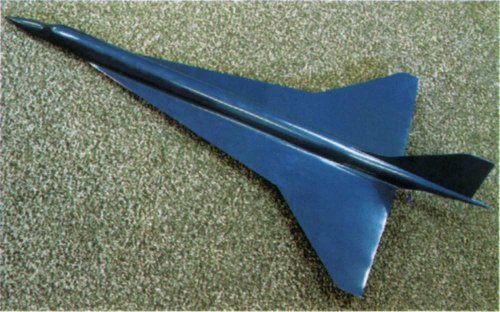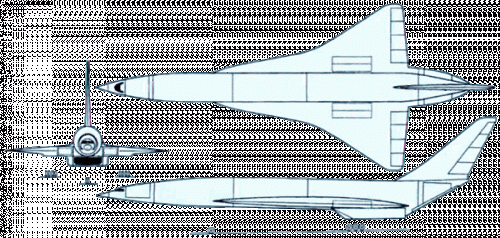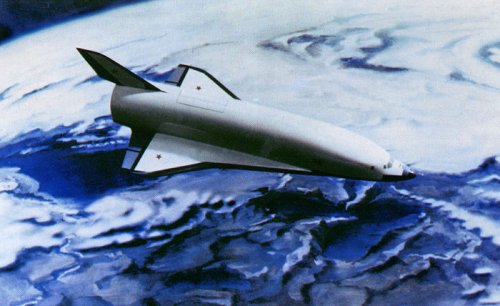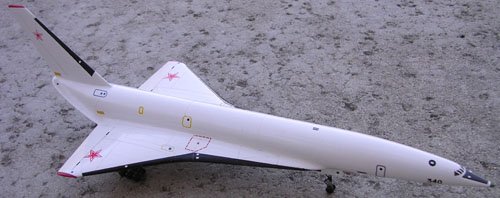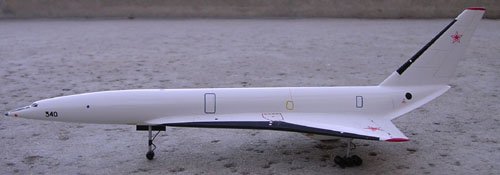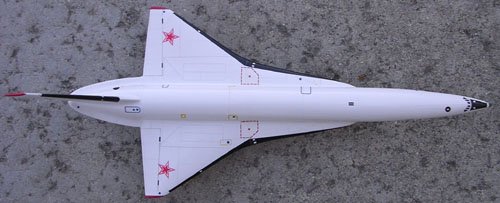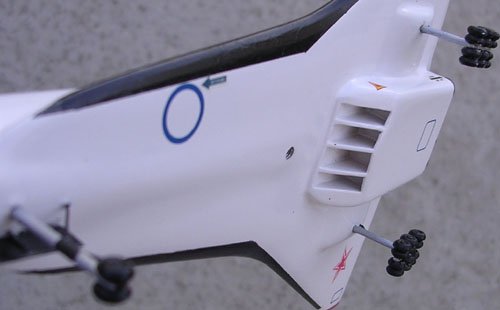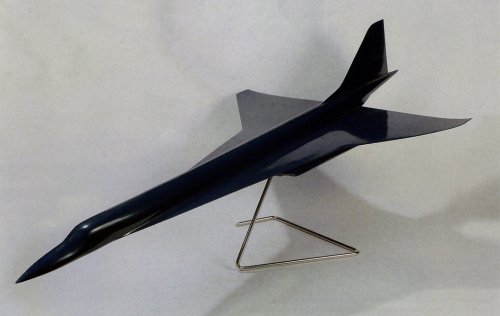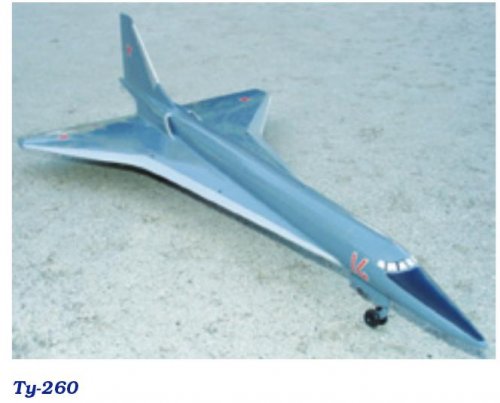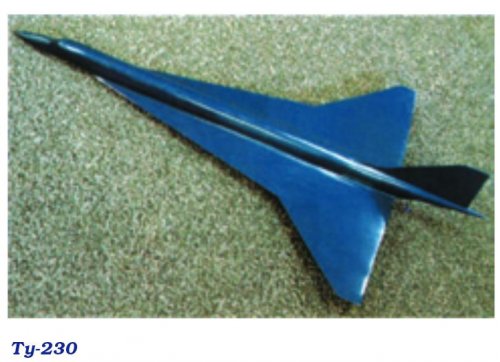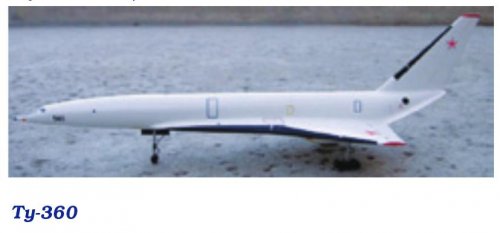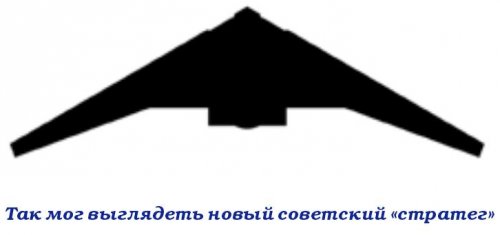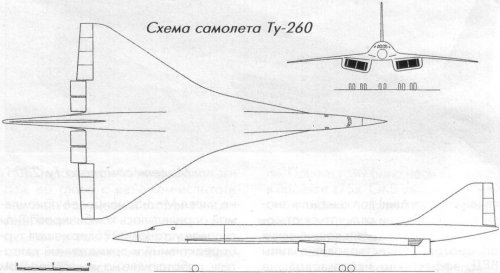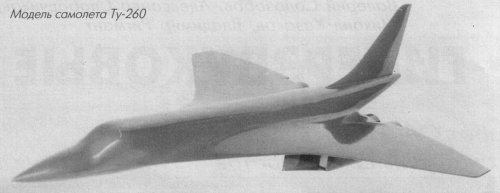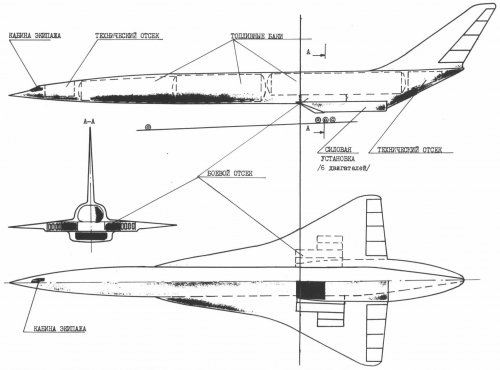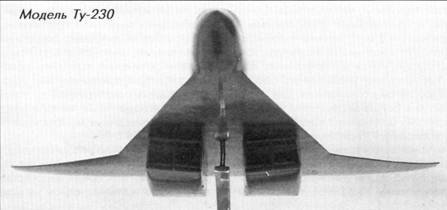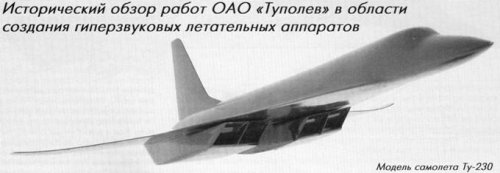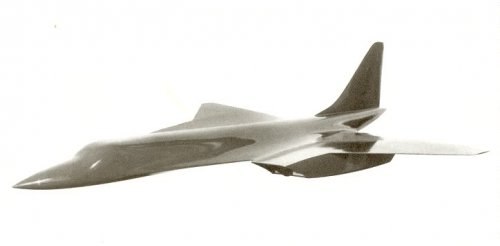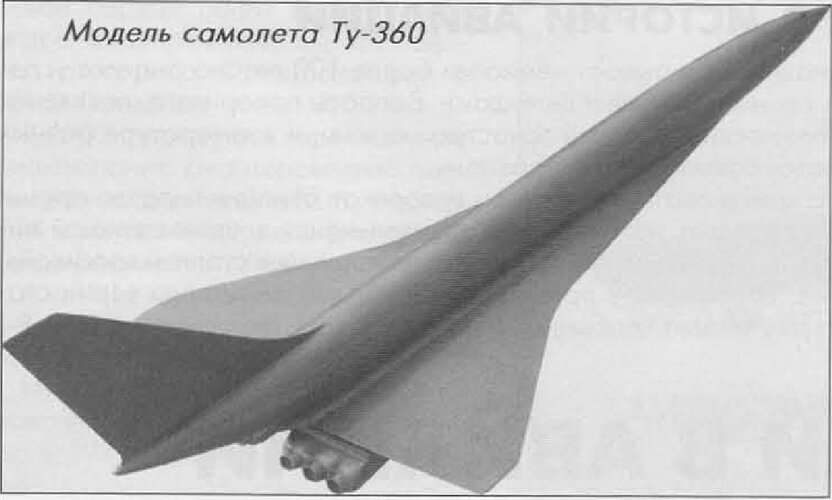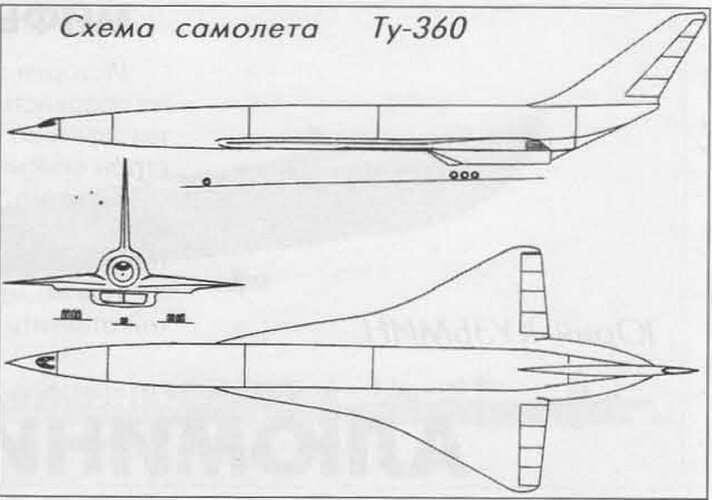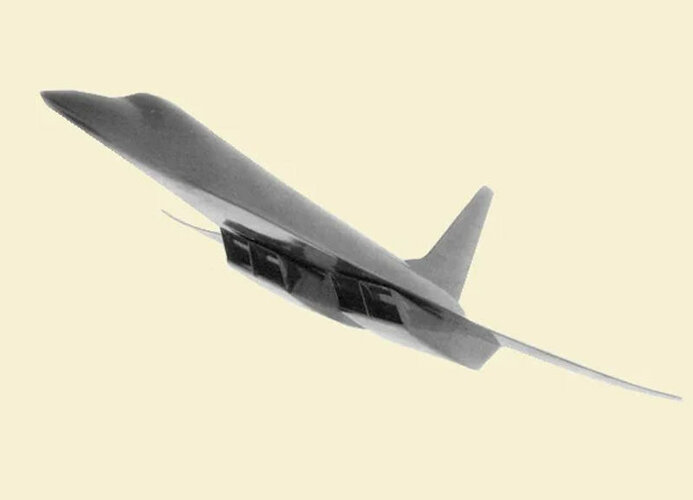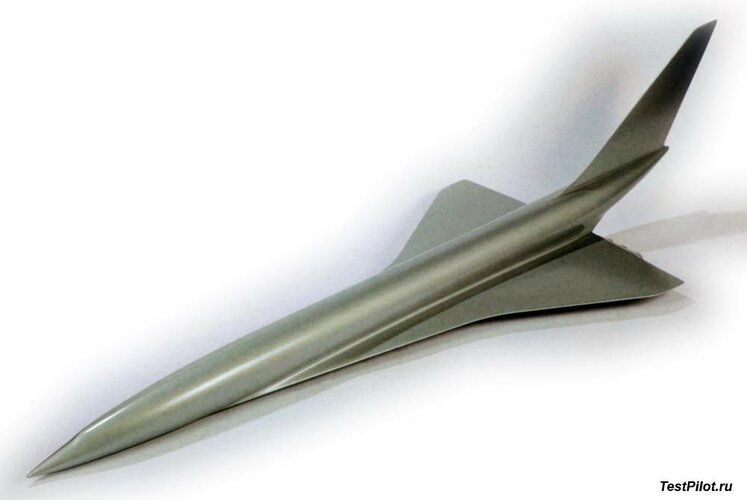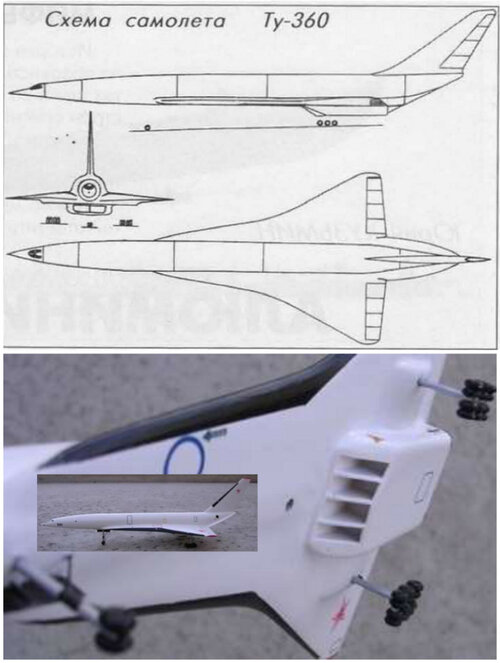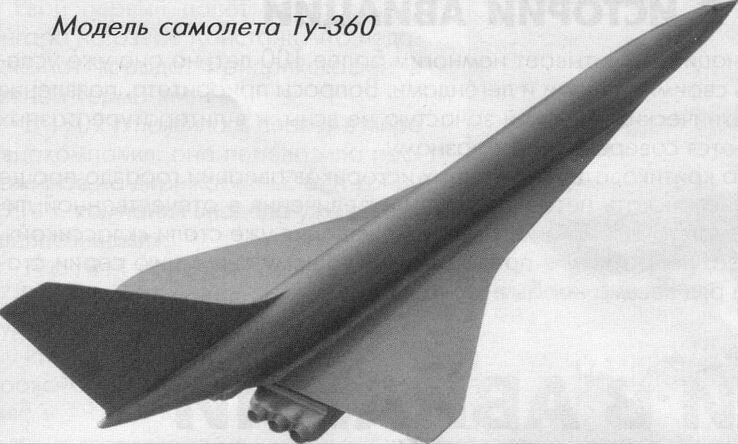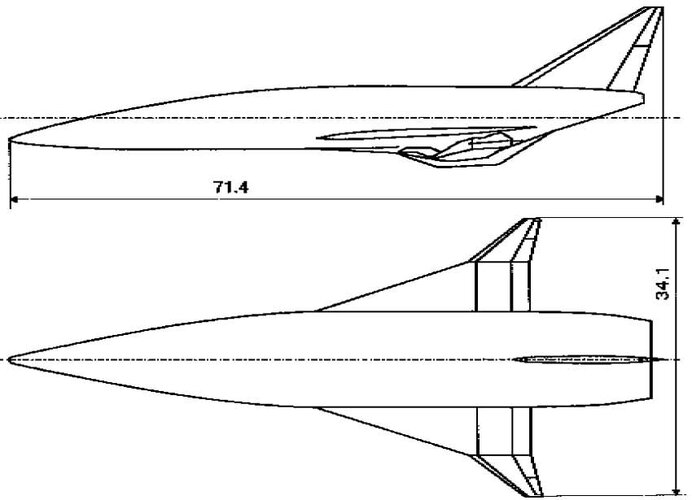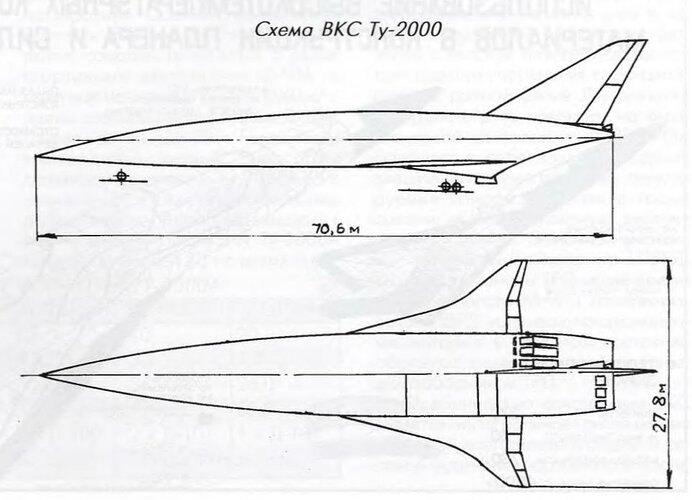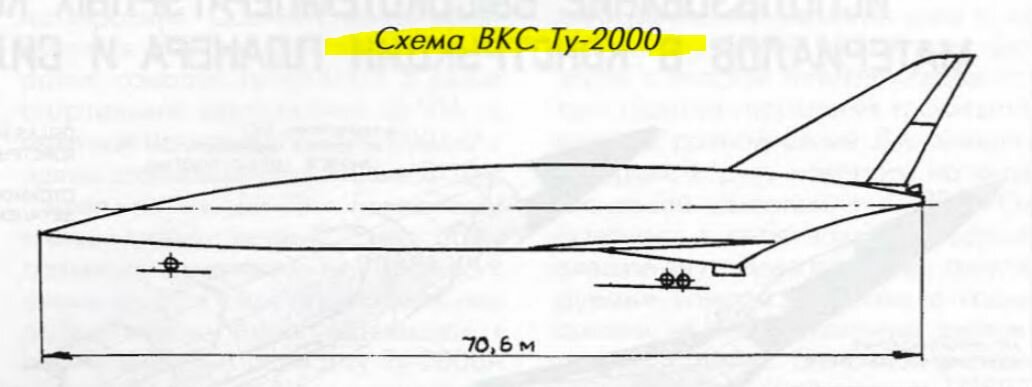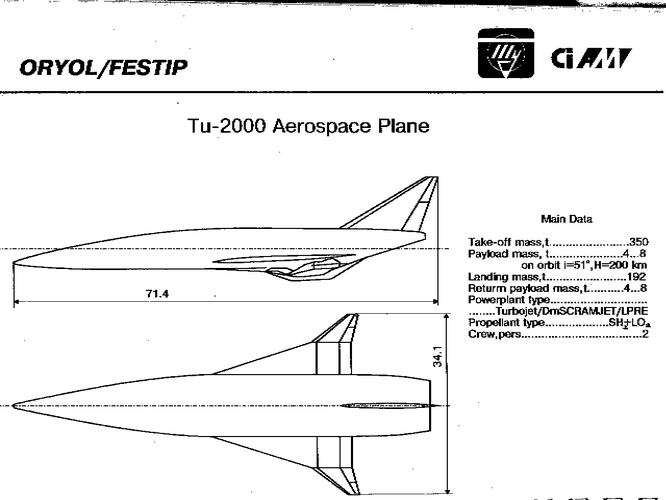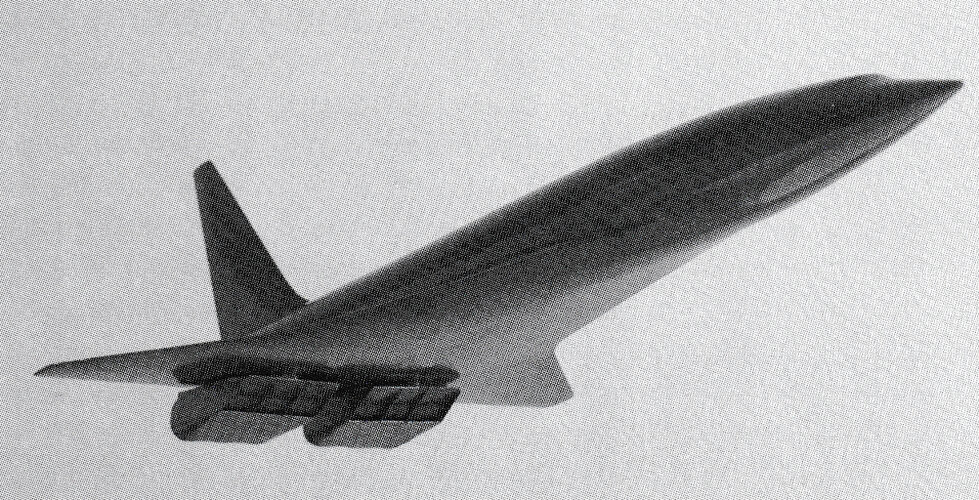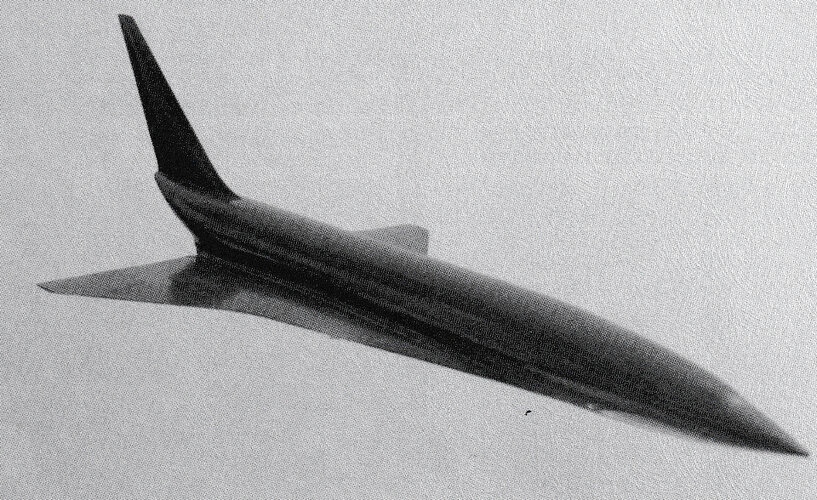Tuomasn
ACCESS: Secret
- Joined
- 5 January 2006
- Messages
- 477
- Reaction score
- 358
Tupolev Tu-260
Crew: 2
Maximum TO Weight: 180,000 kg
Fuel Load: 106,000 kg
Maximum Speed: Mach 4
Ceiling: 25,000-27,000 m
Maximum Range: 8,000-10,000 km
Endurance: 2.3 hours
Engines: Four Soloviev D-80 turbojets
Design work on the Tu-260, also known as Aircraft 230, began in 1983 with Yu. A. Fazylov as project leader, and A. A. Tupolev and A. L. Pukhov as general managers. Draft design of the aircraft was completed in 1985. The Tu-260 was to be a tailless aircraft with delta wing and four turbojet engines.
Sources
Crew: 2
Maximum TO Weight: 180,000 kg
Fuel Load: 106,000 kg
Maximum Speed: Mach 4
Ceiling: 25,000-27,000 m
Maximum Range: 8,000-10,000 km
Endurance: 2.3 hours
Engines: Four Soloviev D-80 turbojets
Design work on the Tu-260, also known as Aircraft 230, began in 1983 with Yu. A. Fazylov as project leader, and A. A. Tupolev and A. L. Pukhov as general managers. Draft design of the aircraft was completed in 1985. The Tu-260 was to be a tailless aircraft with delta wing and four turbojet engines.
Sources
- Tu-160 'Blackjack', International Air Power Review Vol 2, 2001
- http://www.testpilot.ru/russia/tupolev/230/230.htm (in Russian)

